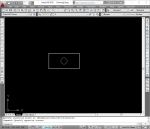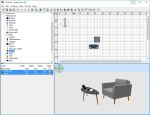- Home
- computer software
- Computer Types
Overview of Computer types
Wide varieties of computer types are available on the market starting from mini notebook up to large and sophisticated supercomputers. These computers are different in many ways.
In this article we will discuss about the division of computer types based on the following factors.
These factors are:-
- Technology
- Function and performance
- Physical Size
- Cost
Actually, computer categorization depends on the factors we use to group. For example, computers can be grouped based on how they look and how they are used. On the other hand, you can classify computers based on the purpose they designed for: special purpose computers and general purpose computers. And still some use other factors to group computers.
Ok, let us go and see the seven types of computers based on the above measurement.
The 7 major categories of Computer types
Handheld computers
Handheld computers are small size computers – as small as credit card. These types of computers incorporate some of the features we find on personal computer, such as web browser, email tool, mp3 player, PDF reader, Office tools and communication facility (wireless networks).
PDA (personal digital assistant) and Smartphone are examples of handheld computers. Smart Phone combines the features and functions of both PDA and Mobile (cell) phone.
Mobile/Portable computers
Mobile or portable computers are small and lightweight PCs which are easy to carry around. All computer parts: system unit, screen, keyboard and pointing device (touchpad) are integrated into single unit.
Portable computers can operate from electric power or from built-in battery. Laptops, notebooks, mini notebooks, netbooks and tablet PCs are grouped into mobile or portable computers.
Usually they are used by business CEO’s, marketers, travelers, journalists, engineers and people who want to work both at the office and home.
Desktop computers
Desktop computers are the popular computer types used in most business computing tasks. As the name implies these types of computers are designed to fit on or under office desk.
Desktop computer gets power from electrical wall outlet, they don’t run with battery.
A typical desktop computer made up of system unit (PC), monitor, mouse, keyboard and speaker. Desktop computers are versatile and less expensive than portable computers. They are also easy for upgrading and maintaining. Desktop computers can be used as a stand-alone PC or connected to a network to share data and peripheral devices.
Workstations
Workstation computers are the same with desktop computer in size and design but it is built in with more powerful processors, memory capacity and high-end graphics display than personal computers.
They are used for resource intensive tasks such as engineering computing, graphics, game development, computer aided design (AutoCAD) and other applications which demand more computer processing power.
Servers
A server is a type of computer designed for providing, sharing and managing network resources and services to client computers that are connected to it. Servers can accommodate many users.
Servers have special type of processors, large memory capacity and huge hard disk space.
Servers are widely used in organizations and small companies. It can be used as a File server, e-mail server, Web server, transaction server and for other large tasks.
Mainframe computers/Enterprise Server
Mainframes are huge, very powerful computer types which are used in large businesses, governmental offices and corporate companies. They are ideal for centralized processing, storage and management of enormous amounts of data.
These types of computers take a space of an entire room or building. Mainframe room is fitted with special equipment's such as heating controllers, ventilating and air conditioning devices to keep room temperature and humidity level that is favorable for the operation of mainframe.
Supercomputers
Supercomputers are the most powerful, fastest and most expensive special purpose computers. They are designed for applications which require complex computing and calculations.
Supercomputers are used in space technology centers, astronomical observatories, airlines, weather forecasting stations, military and governmental offices.
The Cray Supercomputer and IBM’s Blue Gene are examples of supercomputers. IBM’s Blue Gene supercomputer can process 136 trillion floating point operations per second. It has 300,000 processors. Wow! What kind of computer is this?
Conclusion
So far we have been discussing about the different computer types based on the technology, performance power, size and cost. You are now familiar with the types of computers introduced in the current computer systems development.


